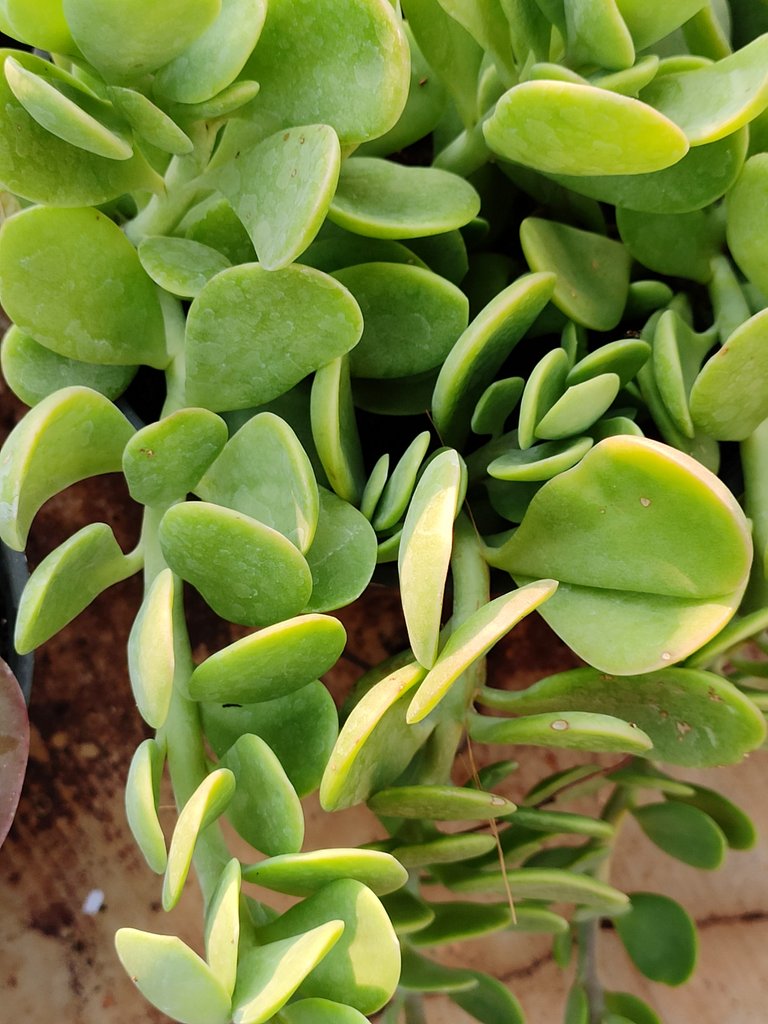
The senecio Jacobsenii is a trailing succulent which also goes by the name weeping jade. Its fleshy, tear drop shaped leaves, greenish-blue color and bushy growth makes it an attractive house plant. These plants also adapt and grow well as ground cover if allowed to grow in the ground. They look stunning in hanging baskets as well. However, I love using them in succulent arrangements to give the arrangement a balanced look. This is one versatile succulent.
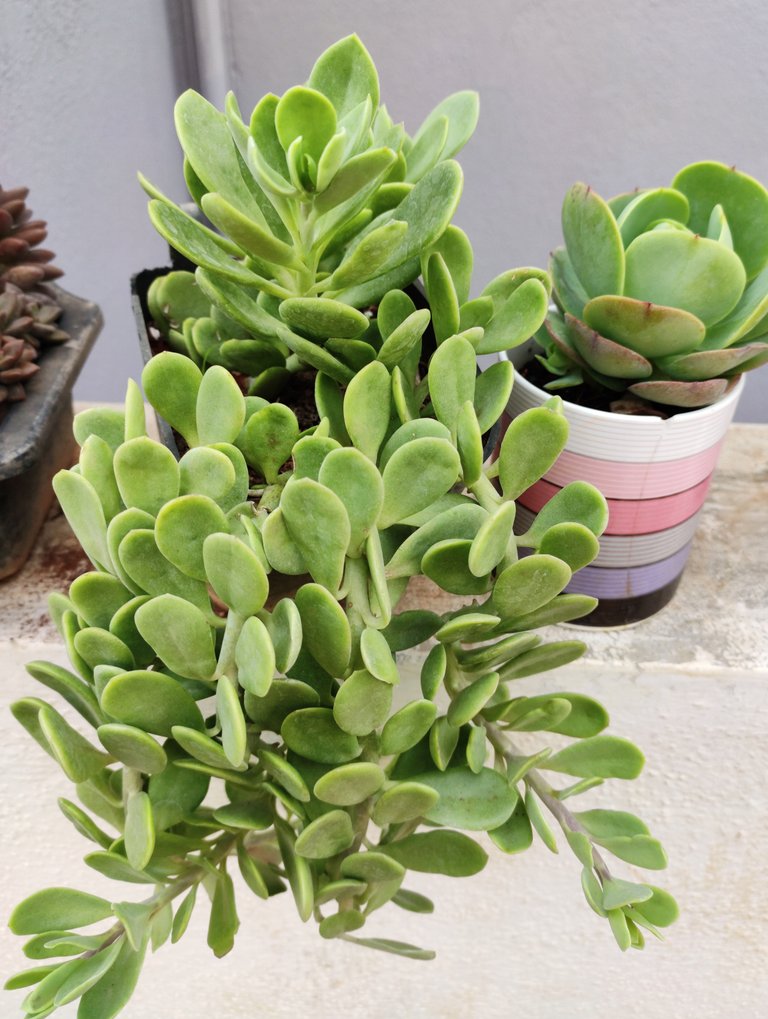
The weeping jade requires about six to eight hours of indirect, but bright light. Less light makes the plant look leggy and unattractive. They don't need much in the way of fertilizers or care. They remain lush and green all through the year even in our kind of hot Indian weather. However over exposure to sun bleaches the leaves and could even leave sun burn spots on them.
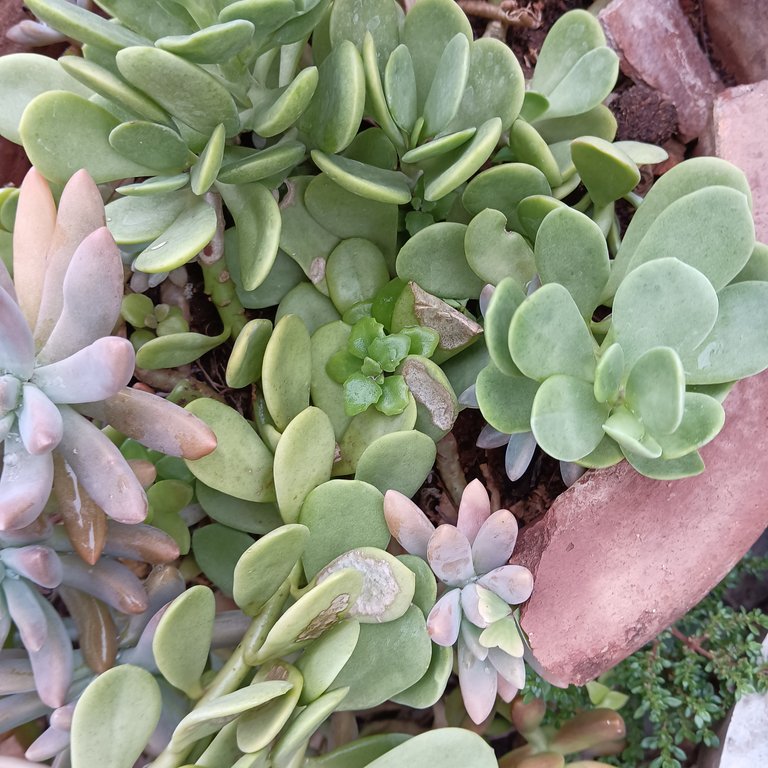
The senecio Jacobsenii doesn't like to be watered often. Even in the hot summer months I water then once in three days only. If growing indoors watering once a week should be enough. Planting them in well draining soil is a must, the leaves tend to get soggy and rot fast and so do the roots if the soil is not right. Adding perlite to the soil helps in keeping the soil mixture light.

These beautiful succulents have no special growing season as such, they grow wild all through the year. When happy they produce orange colored flowers which look like tiny gerberas. These don't require much pruning, however pruning can make them grow busier. I normally prune only if the plant grows legging and unattractive or too long.
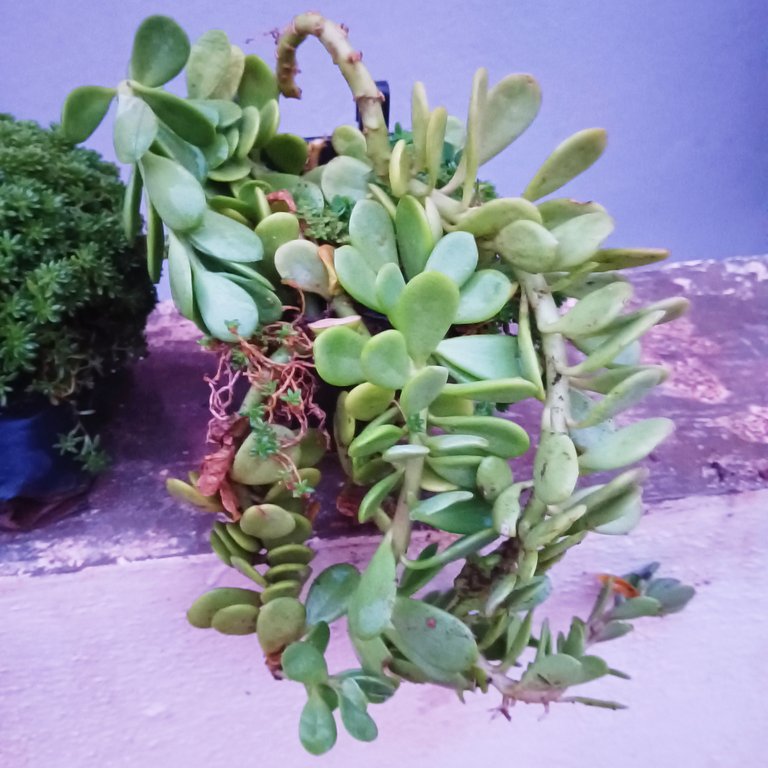
In all these years I've grown these weeping or trailing jades I have never seen them being attacked by pests. This is one headache less which makes this plant a easy plant to care for even by a novice.
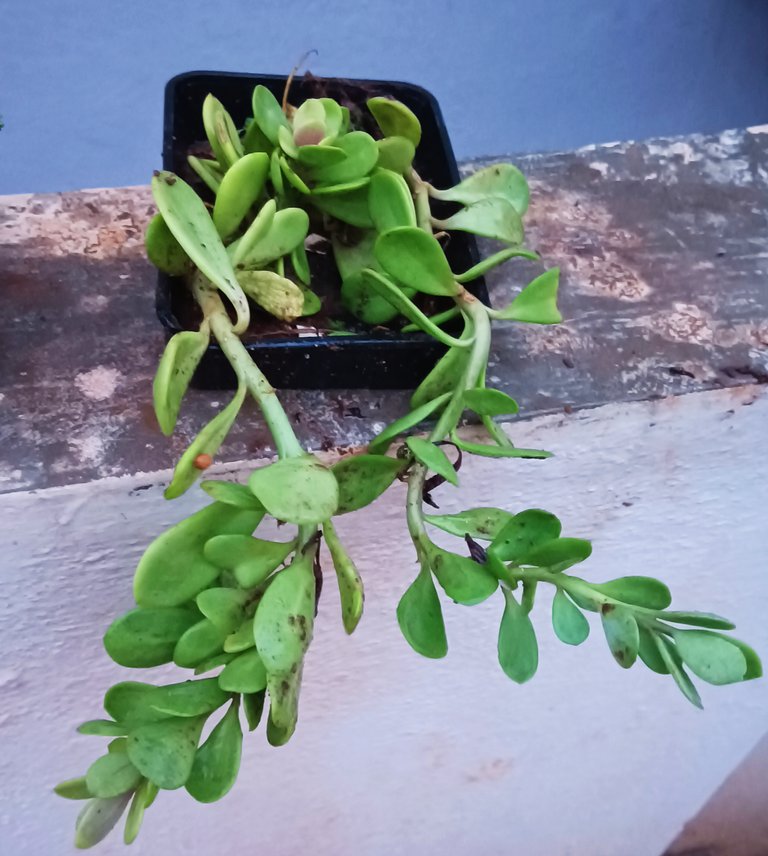 Cuttings left in a tray
Cuttings left in a tray
Propagation is easy. when I need more trailing jades all I do is take cuttings and leave then in a tray with a thin layer of sand. I leave it under the bigger bushes where they get dappled light. I almost always forget about them until I want more trailing jades. You would often see well rooted plants in the tray ready to be planted.
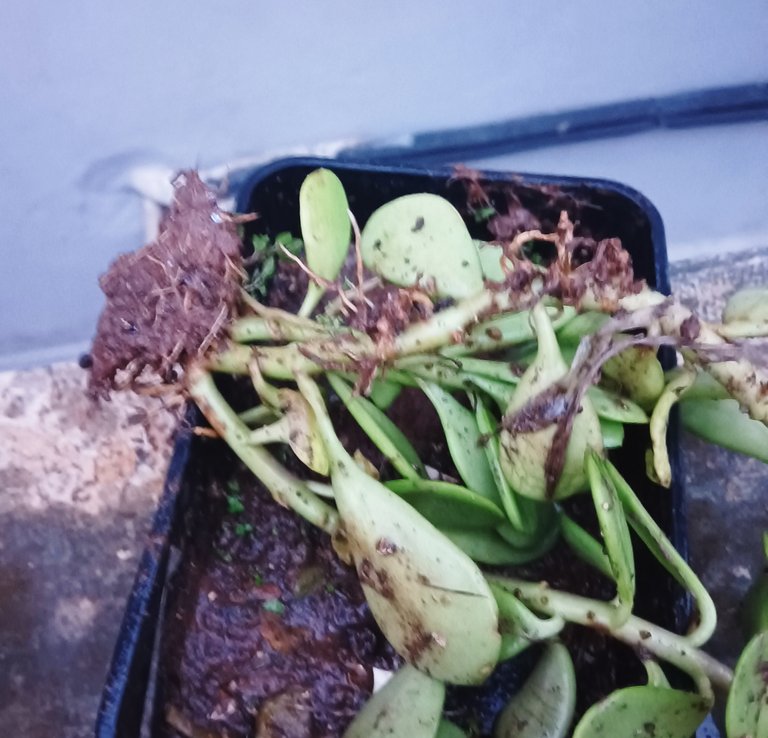
Look at these roots and how well formed they are in a short space of one month. I also sometimes stick a leaf in a pot and see a trailing jade in about six months.
These cuttings been sitting in the rain which has been lashing dirt around.
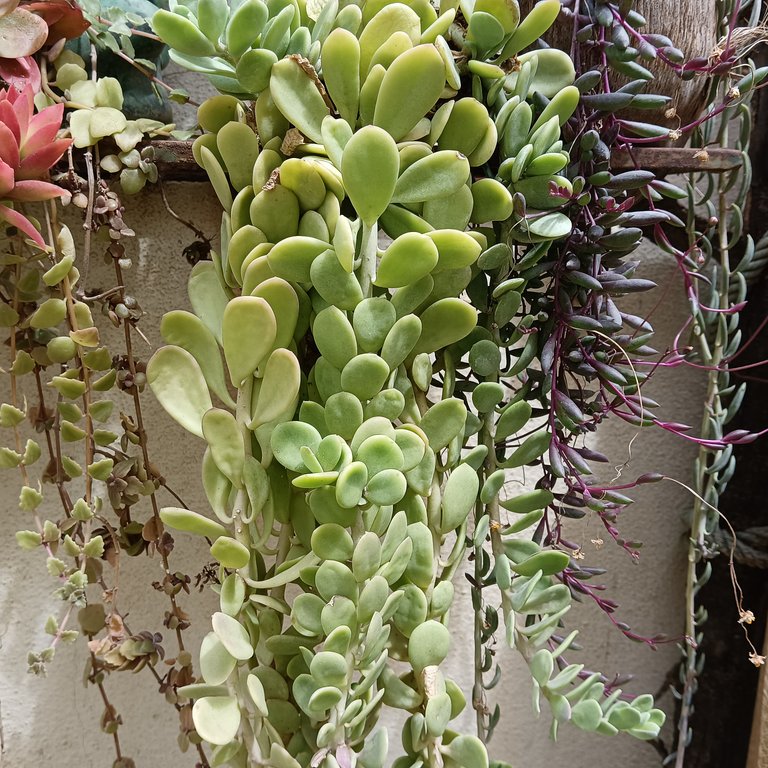
One problem I have noticed with the weeping jade is the stems are thick and heavy as are the leaves. These plants could get top heavy and could topple the pot after they grow to a certain length. It is important then to re-pot or prune to avoid falling, breakage and damage to plant.
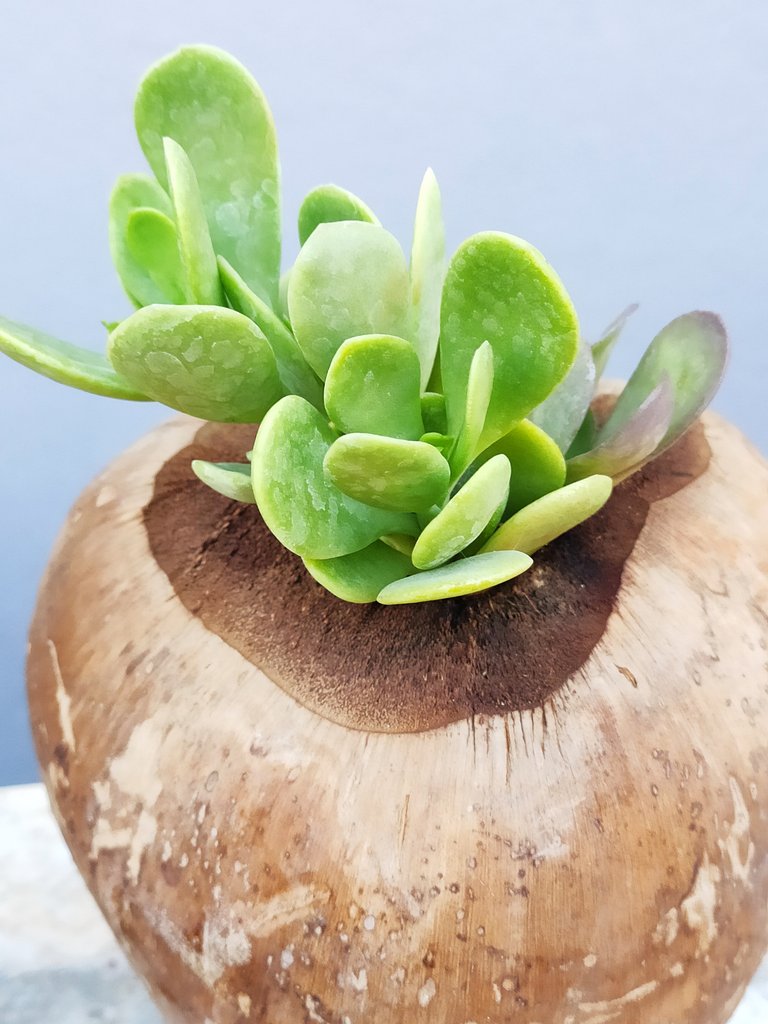
If you can take care of their basic needs like light, soil and watering you can be sure to have a healthy, beautiful trailing jade in your garden. The name 'trailing jade' is often confused with another plant the peperomia rotundifolia which is not a succulent. The trailing jade or weeping jade get its name from a similar looking succulent the Crassula ovata. However these two plants are from entirely different families. The placement of the leaves and how they hang down in a weeping fashion may have contributed to its other name.
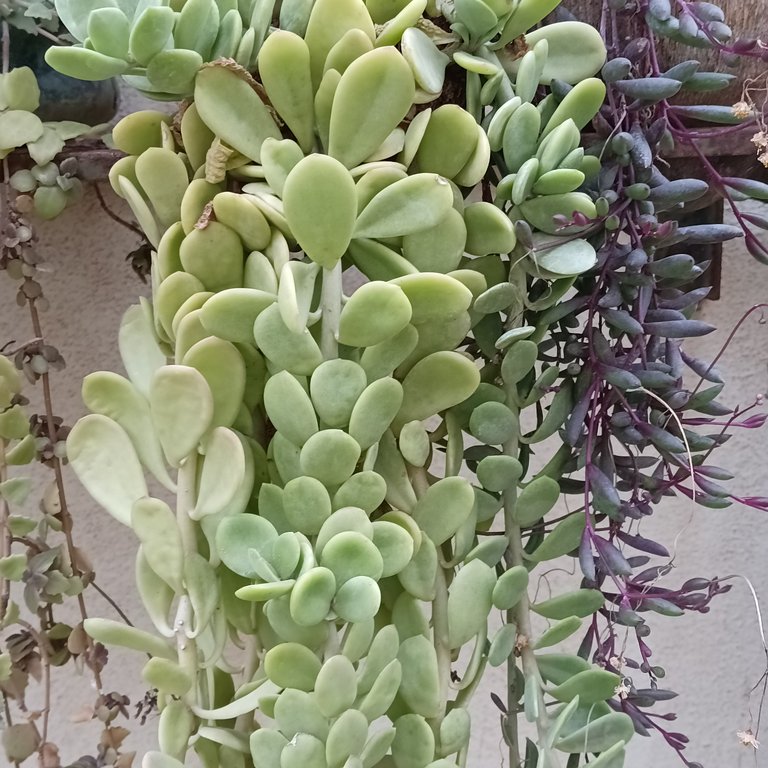
I would rate the senecio Jacobseniias the second most attractive trailing succulent next only to the donkey's tail succulent. While I love fish hook and ruby necklace as hanging succulents I find these two much more easier to care for and grow in the garden.
Happy gardening!
Thank you so much @qurator and the qurator team. I so appreciate this gesture.
Thank you @ladiesofhive